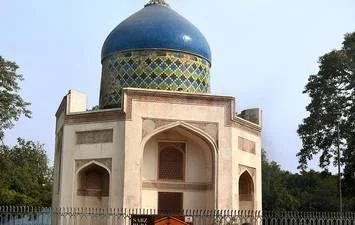UPSC Articles
Sabz Burj
Part of: Prelims and GS-I – Medieval history; Art and culture
Context Sabz Burj, one of Delhi’s earliest Mughal-era monuments, has been conserved and restored over the last four years using traditional materials and building-craft techniques favoured by 16th century craftsmen.
About Sabz Burj (“Green Dome”)
- It is an octagonal tomb situated beside Humayun’s Tomb, New Delhi.
- Some Mughal historians consider the Sabz Burj tomb constructed to be for Fahim Khan, who died in 1626 A.D. He was an attendant to Abdur Rahim Khan during 4th Mughal emperor Jahangir’s reign. But others have opined that it was made in 1530–40.
- The Archaeological Survey of India (ASI) has renovated the structure.
- The structure is crowned with a blue dome and it is popularly known as the Neeli (“Blue”) chhatri
- It is of immense significance due to the ceiling on its double dome structure painted in pure gold and lapis and revealed after conservation efforts began. It is thought to be the earliest surviving painted ceiling for any monument in India.















